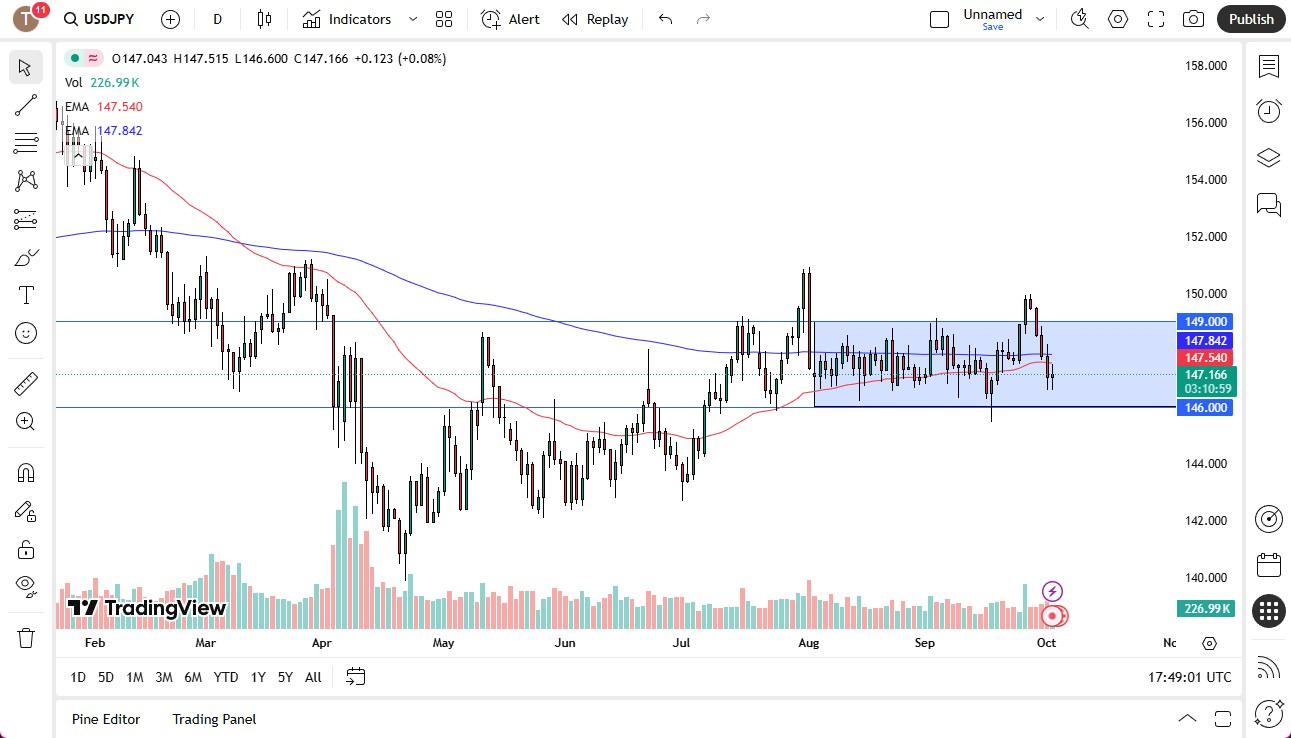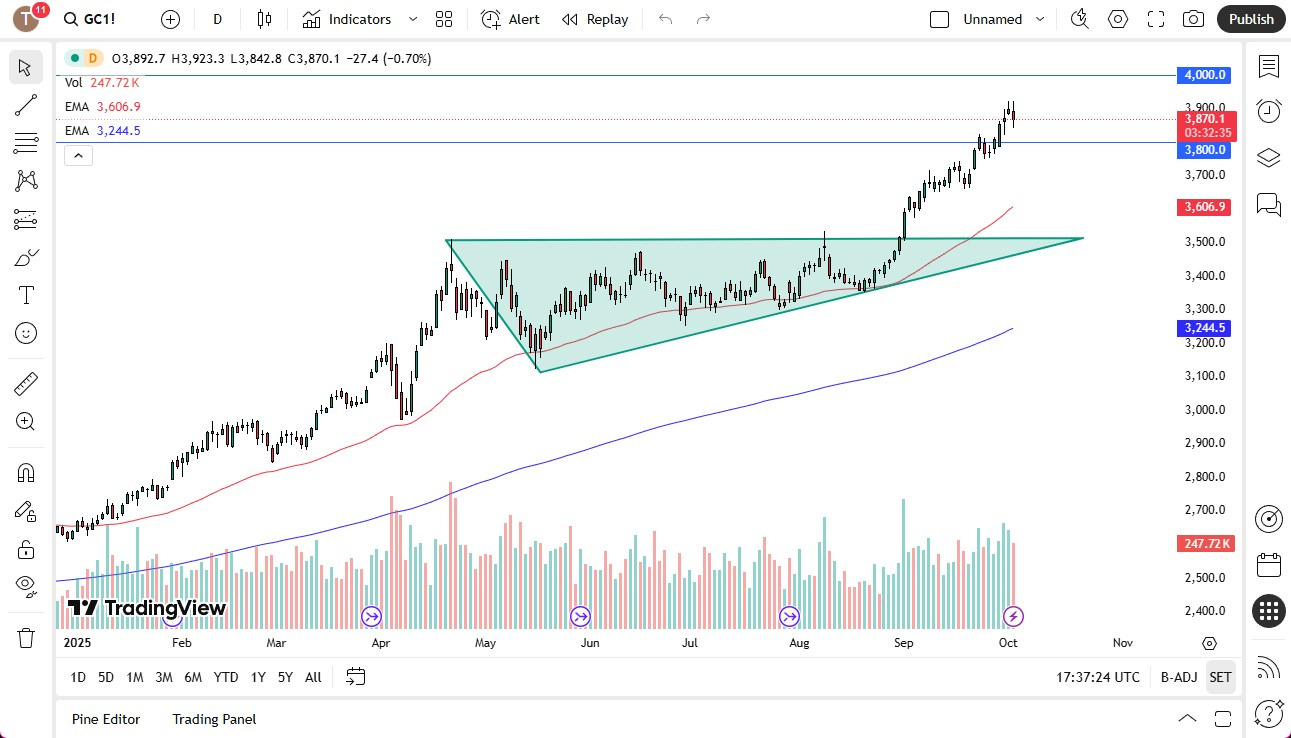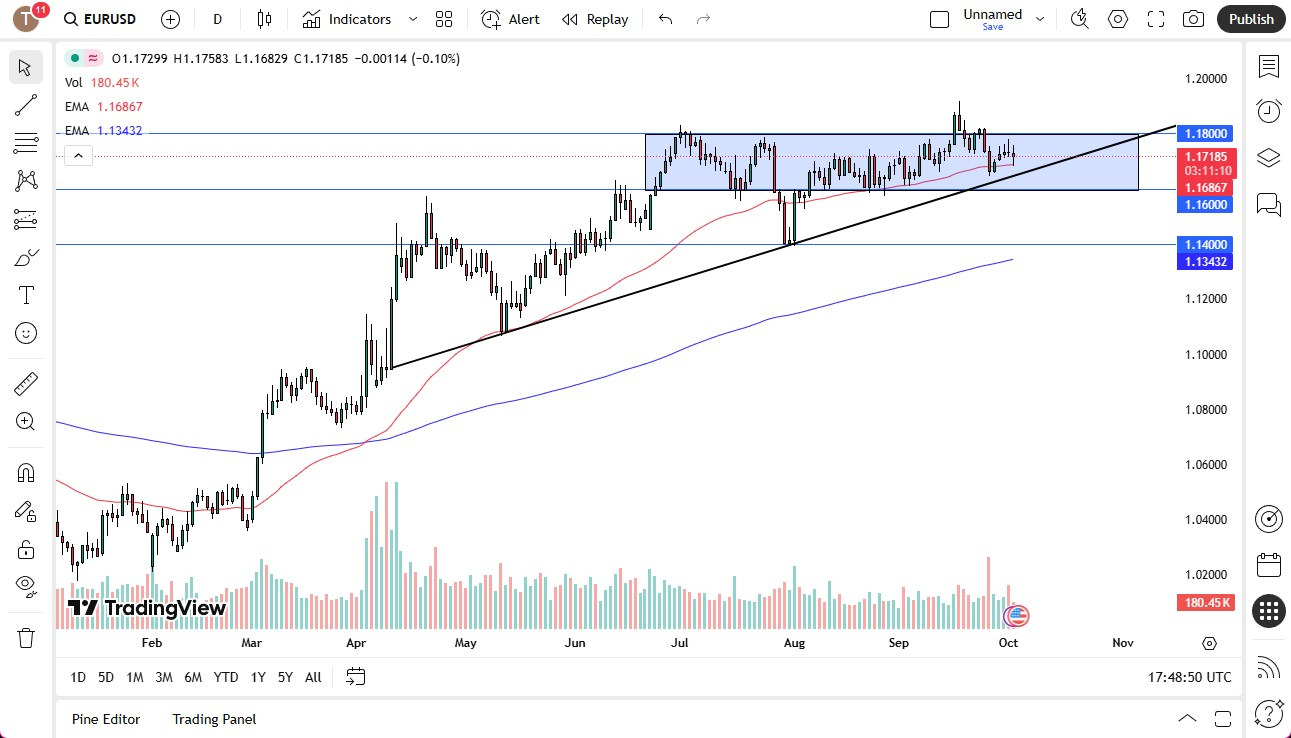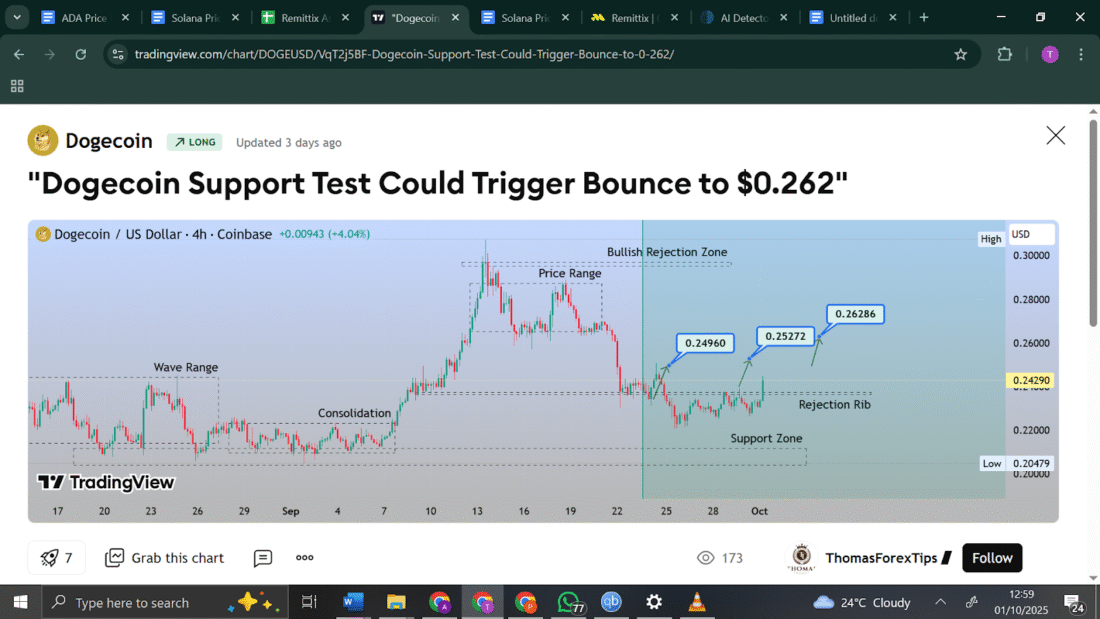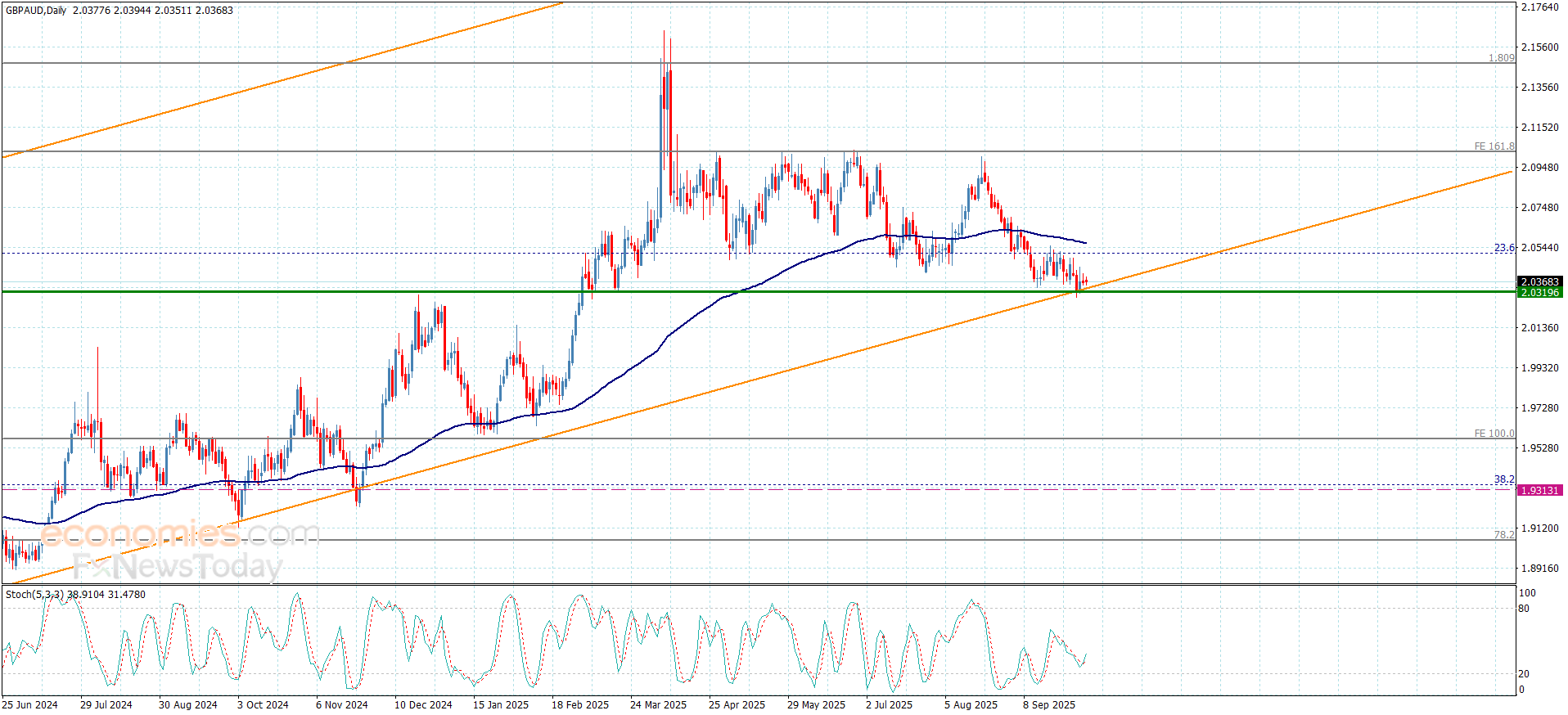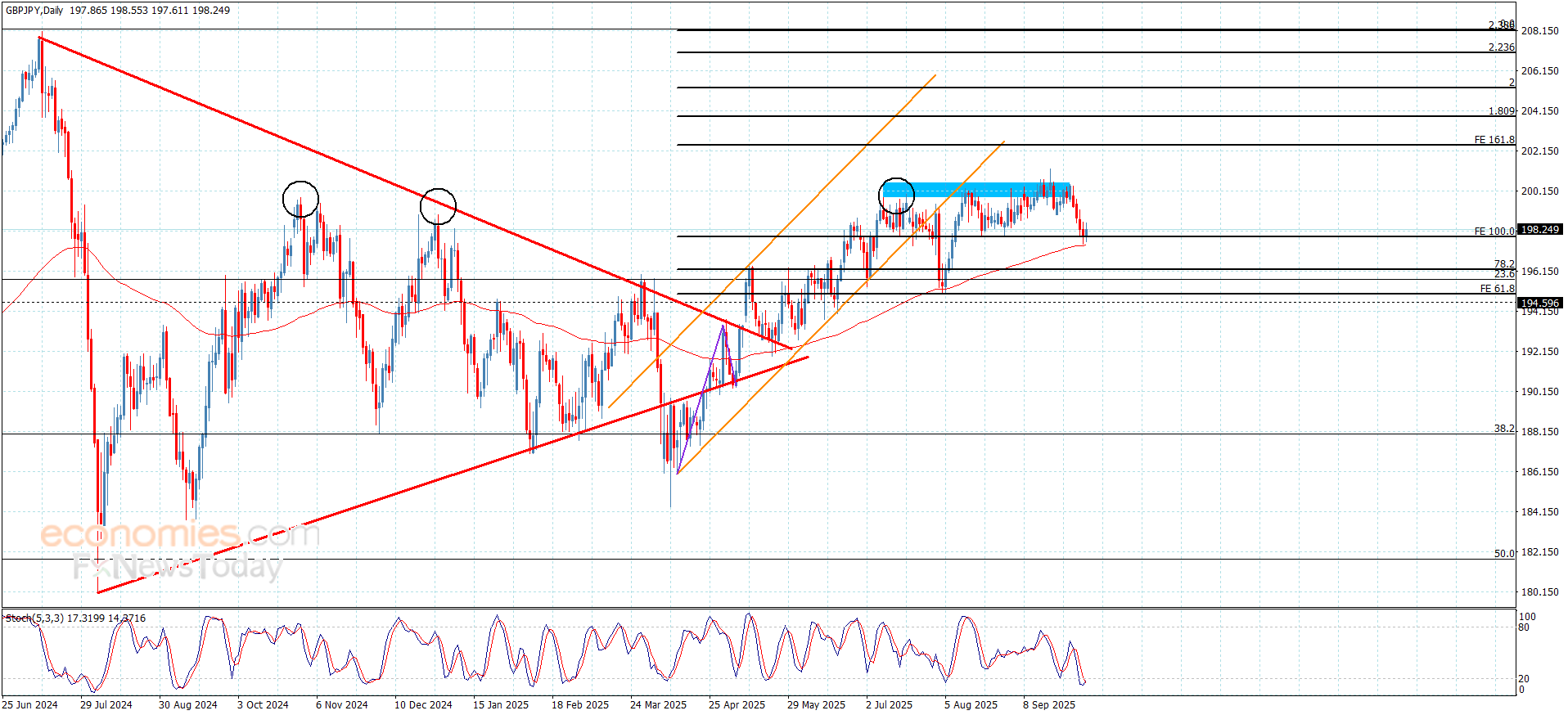Category: Forex News, News
Pound Sterling bulls hesitate ahead of US PMI data
After losing about 0.3% and snapping a four-day winning streak on Thursday, GBP/USD holds steady at around 1.3450 in the European session on Friday. The pair’s technical outlook points to a loss of bullish momentum as market focus shifts to the Institute for Supply Management’s (ISM) Services Purchasing Managers’ Index (PMI) data for September.
Pound Sterling Price This week
The table below shows the percentage change of British Pound (GBP) against listed major currencies this week. British Pound was the strongest against the Canadian Dollar.
| USD | EUR | GBP | JPY | CAD | AUD | NZD | CHF | |
|---|---|---|---|---|---|---|---|---|
| USD | -0.27% | -0.40% | -1.41% | 0.22% | -0.84% | -0.76% | -0.06% | |
| EUR | 0.27% | -0.14% | -1.28% | 0.49% | -0.56% | -0.50% | 0.19% | |
| GBP | 0.40% | 0.14% | -1.07% | 0.63% | -0.49% | -0.36% | 0.33% | |
| JPY | 1.41% | 1.28% | 1.07% | 1.70% | 0.63% | 0.53% | 1.41% | |
| CAD | -0.22% | -0.49% | -0.63% | -1.70% | -1.01% | -0.98% | -0.31% | |
| AUD | 0.84% | 0.56% | 0.49% | -0.63% | 1.01% | 0.06% | 0.76% | |
| NZD | 0.76% | 0.50% | 0.36% | -0.53% | 0.98% | -0.06% | 0.84% | |
| CHF | 0.06% | -0.19% | -0.33% | -1.41% | 0.31% | -0.76% | -0.84% |
The heat map shows percentage changes of major currencies against each other. The base currency is picked from the left column, while the quote currency is picked from the top row. For example, if you pick the British Pound from the left column and move along the horizontal line to the US Dollar, the percentage change displayed in the box will represent GBP (base)/USD (quote).
In the second day of the US federal government shutdown on Thursday, the Senate did not vote on the funding legislation in observance of the Yom Kippur holiday.
Nevertheless, United States (US) President Donald Trump’s administration announced late Wednesday that they froze $26 billion for Democratic-leaning states. Additionally, Trump noted that he will meet with the head of the Office of Management and Budget, Russ Vought, to discuss which federal programs could be cut.
In case lawmakers make progress on finding an agreement to restore funding to the government following these developments, the US Dollar (USD) could gather strength heading into the weekend and cause GBP/USD to stretch lower.
Because of the shutdown, the US Bureau of Labor Statistics will not publish the Nonfarm Payrolls data for September later in the day. Instead, investors will scrutinize the ISM Services PMI report and its Employment Index component.
The ISM Services PMI is expected to stay in the expansion territory, slightly above 50, in September. If the headline PMI drops below 50, the immediate reaction could hurt the USD. In case the headline PMI remains above 50 and the Employment Index, which was 46.5 in August, rises above 50, the USD could outperform its rivals and weigh on GBP/USD.
GBP/USD Technical Analysis
The Relative Strength Index (RSI) indicator on the 4-hour chart stays near 50, pointing to a lack of directional momentum.
The 100-day Simple Moving Average (SMA) and the 20-day SMA form a strong resistance level at 1.3500. The 100-period and the 200-period SMAs on the 4-hour chart reinforce this hurdle as well. In case GBP/USD clears 1.3500, technical buyers could show interest. In this scenario, 1.3550 (Fibonacci 23.6% retracement of the latest uptrend) could be seen as the next resistance level before 1.3600 (static level, round level).
On the downside, support levels 1.3410-1.3400 (Fibonacci 50% retracement, round level) and 1.3360 (Fibonacci 61.8% retracement).
Pound Sterling FAQs
The Pound Sterling (GBP) is the oldest currency in the world (886 AD) and the official currency of the United Kingdom. It is the fourth most traded unit for foreign exchange (FX) in the world, accounting for 12% of all transactions, averaging $630 billion a day, according to 2022 data.
Its key trading pairs are GBP/USD, also known as ‘Cable’, which accounts for 11% of FX, GBP/JPY, or the ‘Dragon’ as it is known by traders (3%), and EUR/GBP (2%). The Pound Sterling is issued by the Bank of England (BoE).
The single most important factor influencing the value of the Pound Sterling is monetary policy decided by the Bank of England. The BoE bases its decisions on whether it has achieved its primary goal of “price stability” – a steady inflation rate of around 2%. Its primary tool for achieving this is the adjustment of interest rates.
When inflation is too high, the BoE will try to rein it in by raising interest rates, making it more expensive for people and businesses to access credit. This is generally positive for GBP, as higher interest rates make the UK a more attractive place for global investors to park their money.
When inflation falls too low it is a sign economic growth is slowing. In this scenario, the BoE will consider lowering interest rates to cheapen credit so businesses will borrow more to invest in growth-generating projects.
Data releases gauge the health of the economy and can impact the value of the Pound Sterling. Indicators such as GDP, Manufacturing and Services PMIs, and employment can all influence the direction of the GBP.
A strong economy is good for Sterling. Not only does it attract more foreign investment but it may encourage the BoE to put up interest rates, which will directly strengthen GBP. Otherwise, if economic data is weak, the Pound Sterling is likely to fall.
Another significant data release for the Pound Sterling is the Trade Balance. This indicator measures the difference between what a country earns from its exports and what it spends on imports over a given period.
If a country produces highly sought-after exports, its currency will benefit purely from the extra demand created from foreign buyers seeking to purchase these goods. Therefore, a positive net Trade Balance strengthens a currency and vice versa for a negative balance.
Written by : Editorial team of BIPNs
Main team of content of bipns.com. Any type of content should be approved by us.
Share this article:




